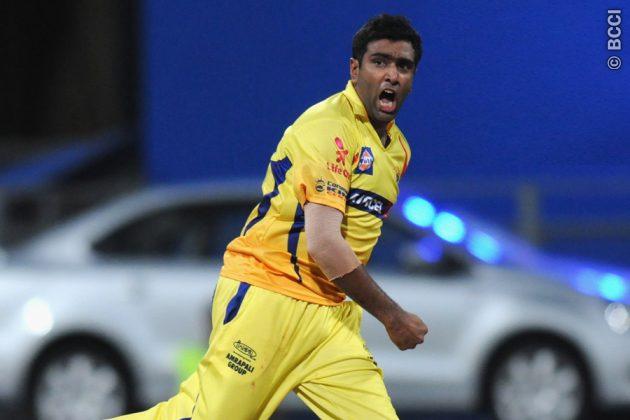Most of the tracks have become batter-friendly since 2013 IPL, admits Ravichandran Ashwin

Ashwin during his IPL days with CSK
|BCCI
Recalling the early days of his IPL career, Ravichandran Ashwin has admitted that most tracks have become batter-friendly since the IPL in 2012-13. Alongside that, Ashwin also narrated intriguing anecdotes from CSK’s title win in 2010, where they went past the challenge of Mumbai Indians.
At one stage in the 2010 Indian Premier League, Chennai Super Kings looked like they were heading out of the playoffs, for the first time in league history. However, that brought out the best of them, with Suresh Raina leading the charge with the bat as Ravichandran Ashwin delivered the telling blow with the ball.
On the penultimate day of the tournament, needing 193 to qualify, MS Dhoni brought out his A-game, with a 29-ball 54 to take the franchise to the playoffs. From thereon, CSK never looked back, bagging the title. Interestingly, former CSK spinner Ashwin admitted that until the 2012-13 season, it was pretty much a good contest between the bat and ball. However, since then, the balance has become lopsided.
“Most of the tracks have changed since the IPL began. Most of the pitches [these days] play really well, making it difficult for the bowlers to restrict the batters. The bats are much harder now. But in 2010, and up to about 2012-13, it was a lot better for the bowlers than it is right now,” Ashwin told ESPNCricinfo.
Opening up on CSK’s tactics, Ashwin expressed that MS Dhoni didn’t discuss strategies and very often, kept things simple, which helped the franchise even when they found themselves in a precarious situation.
“There weren't any clear strategies for the final. MS doesn't discuss strategies elaborately. He likes to keep it really simple. He is one of those captains who plays the card in front of him, backs his players, and has his own set of plans for the particular day,” he added.
Interestingly Ashwin ended the tournament as CSK’s second-joint highest wicket-taker, after having been dropped early on in the tournament. Once he made a comeback into the setup, there was no looking back, as he formed an integral part of the squad, with two IPL and Champions League wins.
“What happened over the next 18 months was even more miraculous for me - the Champions League double [in 2010 and 2014], the 2011 IPL win, and the 2011 World Cup victory were a dream for me, starting from a really low point in 2010 when I got left out of the squad.”
“The stability, in terms of the combination and the confidence one gives to the players, is what leads to an IPL title. In a lot of franchise cricket, people tend to get carried away with a group of results - after two or three games, they want to chuck a few players out and change the combination,” he added.
While Ashwin led the side’s charge with the ball, there was Suresh Raina, who led the side from the batting department. Including the final, Raina always found his A-game, with his 35-ball 57 helping CSK snatch the title away from Mumbai’s hands. Ashwin revealed that Dhoni’s freedom allowed Raina to flourish with the bat.
“What really worked for Suresh in my opinion is the freedom with which he played under MS. He knew that MS could always cover up towards the back end, so he didn't have to think about closing a game out. He was constantly looking to be the aggressor and take the challenge to the opposition,” he added.
